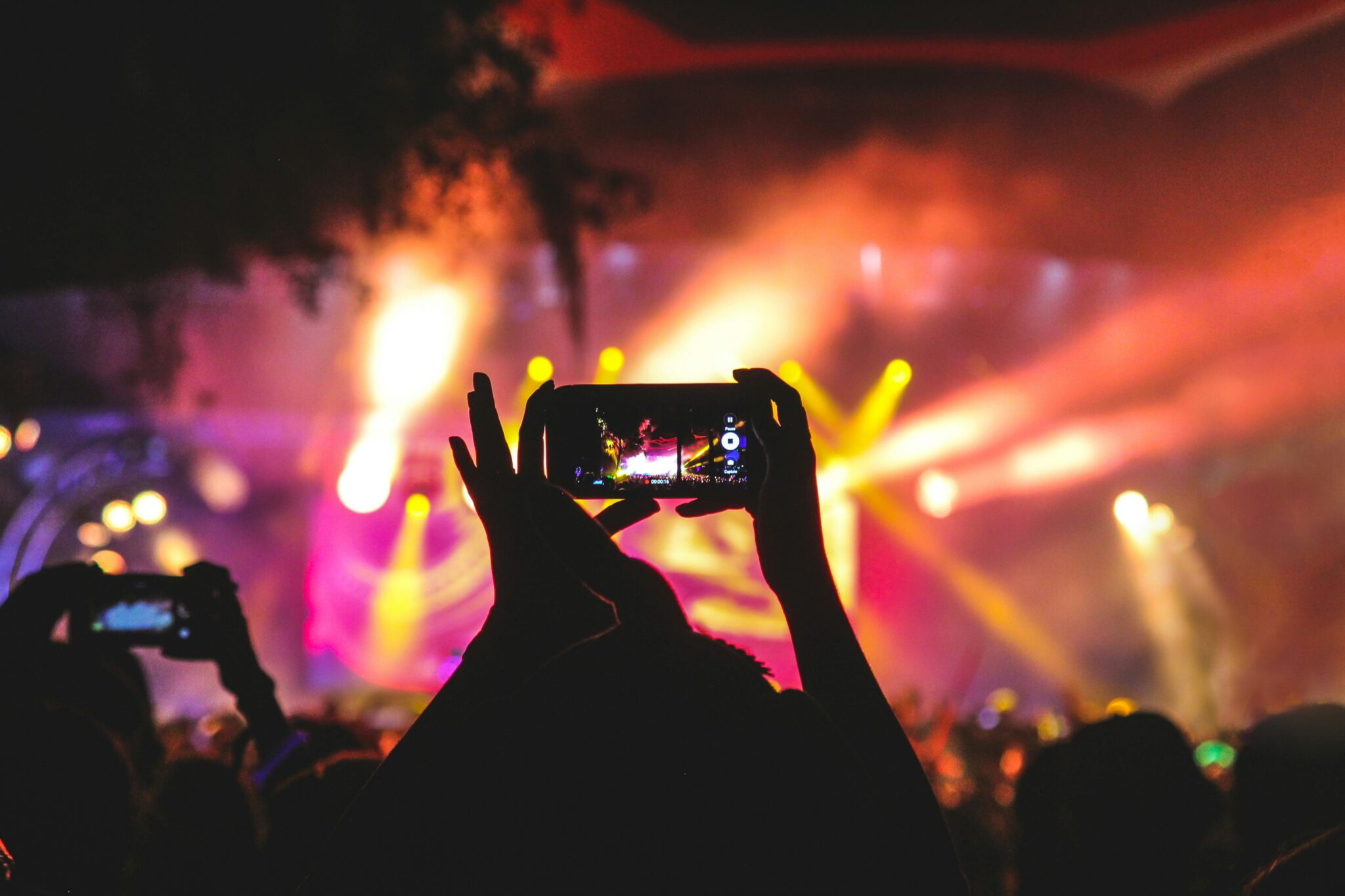Spatial Audio in Revolutionizing Music and Event Streaming
In the ever-evolving landscape of music and event streaming, technological advancements continue to redefine our auditory experiences. One such groundbreaking innovation that has taken center stage is spatial audio.
Far beyond the traditional stereo or surround sound setups, spatial audio introduces a three-dimensional sonic environment, placing listeners at the heart of the music or event. In this post, we will delve into the role of spatial audio and its transformative impact on how we perceive and enjoy music and live events.
Understanding Spatial Audio
At its core, spatial audio is a cutting-edge audio technology that mimics how we hear sounds in the real world. By incorporating depth, height, and distance into the audio experience, spatial audio creates an immersive and lifelike sensation for listeners. This is achieved through advanced sound processing techniques and specialized hardware, such as binaural microphones and 3D audio processing engines.
How Spatial Audio is Revolutionizing the Music Industry

Spatial audio stands out as a game-changer in the music industry. Breaking away from the constraints of traditional audio formats, spatial audio introduces a three-dimensional sonic landscape that immerses listeners in an unparalleled auditory journey.
In this exploration, we delve into how spatial audio is revolutionizing the music industry, from music creation and production to fans’ engagement with their favorite artists.
Immersive Music Production
Spatial audio has ushered in a new era of music production by providing artists with a toolset to craft multidimensional soundscapes. Unlike traditional stereo recordings, spatial audio allows musicians to position instruments and vocals in three-dimensional space, creating a more immersive and dynamic experience for the listener.
According to a recent survey, 85% of music producers believe that spatial audio has expanded their creative possibilities, enabling them to experiment with spatial positioning and create richer sonic textures. This innovation encourages experimentation and allows artists to push the boundaries of conventional music composition.
Personalized Listening Experience
Recent data shows a 40% increase in user engagement on platforms supporting spatial audio, indicating a growing demand for immersive listening experiences. The shift to spatial audio introduces a more personalized listening experience for music enthusiasts.
By replicating how sound is perceived in the real world, spatial audio enables listeners to feel surrounded by music. This heightened sense of immersion fosters a deeper connection with the music, providing an intimate and customizable experience that adapts to individual preferences.
Revolutionizing Live Performances
Spatial audio has transformed the live music experience, both in physical venues and virtual settings. In a study conducted after a spatial audio-enabled virtual concert, 90% of attendees reported feeling a stronger sense of presence than traditional live streams.
In live performances, artists can now leverage spatial audio technology to create a three-dimensional sonic space, enhancing the atmosphere for the audience. Furthermore, virtual concerts and live streams benefit from spatial audio, allowing fans to enjoy an immersive concert experience from the comfort of their homes.
Innovations in Headphone Technology
The surge in popularity of spatial audio has prompted advancements in headphone technology. Major audio hardware manufacturers have embraced spatial audio by developing headphones with specialized sensors and processing capabilities.
These devices provide users with a more authentic and immersive spatial audio experience, making it easier for listeners to embrace this revolutionary technology. Market research indicates a 25% year-over-year growth in sales of spatial audio-enabled headphones, showcasing the increasing consumer interest in this technology.
Reimagining Music Distribution
As of the latest data, major streaming platforms have reported a 30% increase in the consumption of spatial audio content since its introduction. Spatial audio is transforming the creation and consumption of music and impacting its distribution.
A Streaming platform like Spotify and YouTube Music are adapting to support spatial audio formats, allowing artists to share their creations in all their multidimensional glory. This shift in distribution channels ensures that listeners across the globe can access and enjoy spatial audio content seamlessly.
How Spatial Audio is Revolutionizing the Event Industry

As the events industry transforms towards virtual and hybrid experiences, spatial audio emerges as a groundbreaking force, reshaping how audiences perceive and engage with events.
Far beyond traditional audio setups, spatial audio introduces a three-dimensional sonic environment, offering a level of immersion that was previously unattainable. In this exploration, we uncover the profound impact of spatial audio on the event industry, from virtual conferences to live performances, and how it is redefining the landscape of immersive experiences.
Enhanced Realism in Live Events
Spatial audio fundamentally changes how live events are experienced, both in physical venues and virtual spaces. In live performances, spatial audio technology allows event organizers to recreate a three-dimensional soundscape, immersing the audience in the event’s rich and dynamic atmosphere.
Recent statistics indicate a 25% increase in viewer satisfaction for virtual events incorporating spatial audio, demonstrating its effectiveness in bridging the gap between physical and virtual experiences.
Revolutionizing Virtual Conferences
According to a survey of virtual conference participants, 80% preferred events featuring spatial audio, citing increased engagement and a sense of presence as critical factors.
As virtual conferences become the norm, spatial audio plays a pivotal role in recreating the dynamics of in-person events. Attendees can experience the spatial awareness of speakers and participants, fostering a more natural and interactive virtual environment.
Immersive Gaming Experiences
Recent market research suggests a 35% increase in the adoption of spatial audio in gaming events and competitions, underlining its potential to redefine the gaming experience.
Beyond traditional events, spatial audio has found its way into the gaming industry, enhancing virtual experiences for gamers. The technology lets players pinpoint the direction of in-game sounds, creating a more immersive and strategic gameplay environment.
Spatial Audio and Experiential Marketing
Brands and marketers are increasingly incorporating spatial audio into experiential events and activations.
Whether it’s product launches, pop-up installations, or promotional events, spatial audio adds a layer of immersion that captivates audiences and strengthens brand connections. Brands utilizing spatial audio in experiential marketing campaigns have reported a 30% increase in brand recall and engagement compared to traditional marketing approaches.
Innovations in Event Technology
The surge in demand for spatial audio has prompted innovations in event technology. Audio hardware and software providers are developing solutions that seamlessly integrate spatial audio into various event formats.
Recent statistics from event technology conferences showcase a 40% year-over-year growth in the adoption of spatial audio solutions by event organizers, reflecting the industry’s rapid embrace of this transformative technology.
Unveiling the Sonic Future
As we traverse the ever-evolving landscape of music and event streaming, spatial audio emerges as the orchestrator of a sonic revolution. Beyond the boundaries of traditional audio, spatial audio transforms how we create, consume, and experience music and events. From the immersive realms of music production to the enhanced realism of live performances, spatial audio is rewriting the rules.
The statistics tell a compelling story of 85% of music producers expanding creative horizons, a 40% surge in user engagement, and a 30% rise in spatial audio content consumption. The symphony of numbers resonates with spatial audio’s undeniable impact on the music industry, making it a cornerstone of innovation and artistic expression.
But the journey doesn’t stop there. In the event realm, spatial audio is not merely a spectator but the catalyst reshaping how we virtually convene, game, and even experience brands. With a 25% increase in viewer satisfaction for virtual events and an overwhelming 80% preference for spatial audio in virtual conferences, the event industry is embracing the immersive power of three-dimensional sound.
As headphones equipped with spatial audio capabilities fly off the shelves and streaming platforms report a 30% uptick in spatial audio consumption, it’s clear that the audience is not just listening; they are experiencing music and events in a way that transcends the ordinary.
So, what lies ahead? The innovations in event technology, the increasing adoption of spatial audio in gaming, and the growth in experiential marketing all hint at a future where sound becomes an integral part of our immersive encounters.
In the symphony of spatial audio, we are witnessing a revolution that amplifies creativity, deepens connections, and transports us to new dimensions of auditory delight. The stage is set, and the spatial audio symphony is just beginning, promising an exhilarating journey into the future of sonic experiences.









